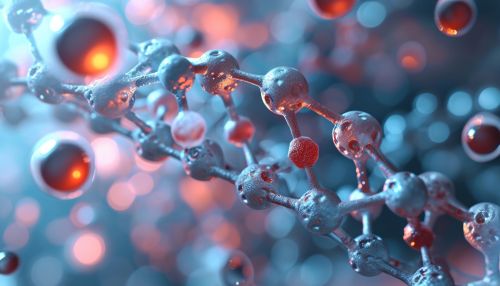ATP (adenosine triphosphate)
Introduction
Adenosine triphosphate (ATP) is a complex organic chemical that provides energy to drive many processes in living cells, e.g., muscle contraction, nerve impulse propagation, and chemical synthesis. Found in all forms of life, ATP is often referred to as the "molecular unit of currency" of intracellular energy transfer.
Structure
ATP consists of an adenosine molecule and three inorganic phosphate groups (triphosphate). The structure of ATP has an adenine nucleotide bound to three phosphate groups. The phosphate groups of ATP are named in sequence based on their proximity to the ribose: the groups are the alpha (α), beta (β), and gamma (γ) phosphates.


Energy Storage and Release
The energy in ATP is stored in the bonds between the phosphates and released when they are broken, which occurs through the process of hydrolysis. The removal of the endmost phosphate group (gamma phosphate) releases a large amount of energy and produces adenosine diphosphate (ADP). This process is reversible; energy can be stored in ATP by the addition of a phosphate group to ADP in a process called phosphorylation.
Role in Cellular Functions
ATP is involved in a variety of cellular processes. It provides the energy for physical activity by fueling muscle contraction. ATP also powers the transport of molecules across cell membranes, known as active transport. It is necessary for DNA replication and protein synthesis, two fundamental processes in cell growth and reproduction.
ATP Production
ATP is produced by several distinct cellular processes, the three most important of which are glycolysis, the tricarboxylic acid cycle (also known as the Krebs cycle), and oxidative phosphorylation. These processes are part of cellular respiration, the process by which cells obtain energy from nutrients.
ATP and Disease
Abnormalities in ATP production or utilization can lead to a variety of diseases. For example, defects in the enzymes involved in ATP production can lead to metabolic disorders such as mitochondrial diseases. In addition, some toxins and drugs can interfere with ATP production, leading to cell death and disease.
